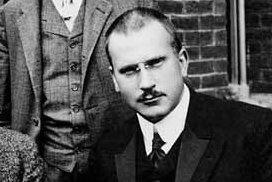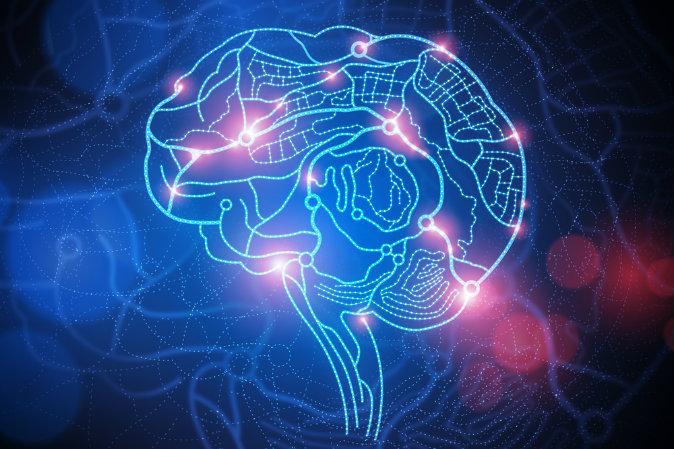Understanding coincidences can be useful for personal growth. Coincidences may help you find your soulmate, a job opportunity, or even a lost dog. Tapping into their power requires a systematic study, says psychiatrist Dr. Bernard Beitman.
Dr. Beitman is a visiting professor at the University of Virginia and former chair of the Department of Psychiatry at the University of Missouri-Columbia. He attended Yale Medical School and completed his psychiatric residency at Stanford.
He encountered coincidences in his life that piqued his curiosity as a scientist.
“These coincidences were like strange places and I wandered into them,” he said. Like all frontiersmen, he was not content to enter these strange places and turn back without further exploration.
Dr. Beitman is developing an interdisciplinary study of coincidences. Like all frontiersmen, he is part of a very small group staking claim in this territory, but perhaps it will one day grow into a thriving hub of activity.
“I am a kind of invisible father of coincidence studies,” Dr. Beitman said. He said he’s calling out to the scientific community, “Hey, anyone want to get this off the ground?”
“I think one of the most important things I’ve learned from this is how people’s pre-formed concepts dictate their responses,” he said. Some see coincidences as strictly explainable by probability. Some see them as explainable only through religion. Both extremes discount the value of studying them as a science with a subjective element.
But Dr. Beitman sees a way forward.
An important first step in establishing a field of study, especially around a topic so seemingly mysterious, is to create a solid description of the subject matter. What are coincidences?
Dr. Beitman categorizes them. He is taking Carl Gustav Jung’s somewhat ethereal musings on synchronicity and sharpening the focus, cleaning them up, making them “look more like a science,” he said.

Carl Gustav Jung (Wikimedia Commons)
He has adopted and refined a few terms commonly related to coincidences, and coined a few of his own. He divides coincidences into the following categories, explained here in simple terms for the sake of brevity, though they have further nuances of meaning:
1. Synchronicity—psychological/ interpersonal coincidences
Synchronicity literally means “moving together in time.” Dr. Beitman explained it in some of his writings as “the surprise that occurs when a thought in the mind is mirrored by an external event to which it has no apparent causal connection.”
For example, for the first time in 20 years you think of your 4th grade teacher and later that day, you run into her at the supermarket.
2. Serendipity—action coincidences
Serendipity is essentially finding what you need just when you need it, without really knowing how you found it.
3. Seriality—strings of similar events
Dr. Beitman wrote: “The phenomenon of seriality differs from serendipity and synchronicity in that it is a series of events in the objective world that the mind takes note of and remembers. Unlike synchronicity, there is no special subjective element. The series could theoretically be verified by anyone.”
4. Simulpathity—feeling another’s distress at a distance
Dr. Beitman coined this term. He explained it thus: “A specific subclass of synchronicity—the simultaneous experience by one person of another person’s distress at a distance.” The largest number of reports concern twins, especially identical and extroverted twins, though parents have also experienced this phenomenon in connection with their children.
It is different from empathy. It happens when one person is unaware consciously that the other is experiencing distress.
5. Instrumental—useful
There are two types of instrumental, or useful, coincidences. One relates to coincidences that incite a psychological change.
For example, A woman who was about to allow her abusive husband to move back in with her answered her ringing phone before leaving to meet up with him. On the other end was a woman who had dialed the wrong number. The two ended up speaking for a little while and it turns out the woman who dialed the wrong number had a boyfriend who was abusing her.
“The fear in the stranger’s voice made me understand that staying with my husband was a mistake. When I met him at the airport, I told him my thinking had changed and he could not live with me,” the woman told Dr. Beitman.
The other type of instrumental coincidence relates to serendipity, cases in which a person gets what he or she needs. Dr. Beitman established this category to emphasize the usefulness of coincidences.
He had two personal experiences that were part of his inspiration to create these last two categories.
Dr. Beitman’s Personal Coincidences
His father was on his deathbed, thousands of miles away. Dr. Beitman started choking, apparently without cause. He later found out that at approximately the same time, his father was choking. He experienced what he understands to be simulpathity.
How does he explain this? “Our thoughts and feelings have much more influence on each other than we think,” he said. Through his study of coincidences, he has come to understand further that, “We’re all in this thing together.”
A study of coincidences takes into account all the potential explanations for coincidence—probability, psychological factors, belief in a higher power, and more. It’s hard at this point to say with certainty what causes any given coincidence.
Dr. Beitman used an analogy to describe the current stage in the development of coincidence studies. He said it’s like seeing flashing lights in the distance. You can observe the lights and discern their patterns, and that can provide information about their nature, and eventually, their source. It’s about looking back from the event at the underlying principles.
Finding a Lost Dog
Another personal coincidence that inspired Dr. Beitman happened when he was a child.
His dog, Snapper, was missing for several hours. The young Dr. Beitman rode his bike to the police station to ask if anyone had seen Snapper. The police had not seen his dog, and he started to cry. He got on his bike, and took a wrong turn in his distraught state.
Riding for a little while in this random direction, he saw through his tears Snapper running up to him as though the dog had expected him to meet him there the whole time.
“I’m almost sure he said to me, ‘Where have you been?’” Dr. Beitman said with a laugh. Snapper seemed “long past expecting me.”
“When you get lost, coincidences are more likely to happen,” Dr. Beitman said. Coincidences are out of the ordinary, and they often occur when a person is doing something out of the ordinary.
Does the Human Body Have GPS Capabilities?

Conceptual illustration of the mind via Shutterstock
Dr. Beitman hypothesizes that we have inborn global positioning systems (GPS), as evidenced in his meeting with Snapper. Something in us gives us the ability to locate useful things, and understanding this ability could greatly help people find direction in life.
He gave the example of a student who was looking for a cultural anthropology research assistant position. The student found the search a tough one. He was running a marathon and his mother was on the sidelines watching. She struck up a conversation with another bystander and, as it turns out, this bystander was looking for a cultural anthropology research assistant and ended up hiring her son.
“I think the mother GPSed her way to this person,” Dr. Beitman said.
Imagine if we could tap into this ability and consciously locate just the person we need to meet at a given moment.
He mentioned a study in which certain brain cells in rats were shown to be activated according to where the rats were located in the cage. “These grid cells mapped where the rat was,” Dr. Beitman explained. The grid cells are located in an area near the hippocampus part of the brain. This could be a first glimpse into an innate GPS system in the human body.
Dr. Beitman cited a Spanish Gypsy proverb that could sum up the circumstances in which people encounter coincidences, as well as the quest for a better understanding of coincidences: “The dog that trots about finds the bone.”

Bernard D. Beitman, MD, is the first psychiatrist since Carl Jung to write a major book about synchronicity. The only other book by a psychiatrist is a short 1979 collection of stories interwoven with theory and usefulness. Beitman is Visiting Professor at the University of Virginia and former Chair of the Department of Psychiatry at the University of Missouri-Columbia. He attended Yale Medical School and completed his psychiatric residency at Stanford. He has received two national awards for his psychotherapy training program and is internationally known for his research in the relationship between chest pain and panic disorder. He has edited two issues of Psychiatric Annals that focus on meaningful coincidences and is a founder of the new discipline of Coincidence Studies. See more on his website Coincider.com.





